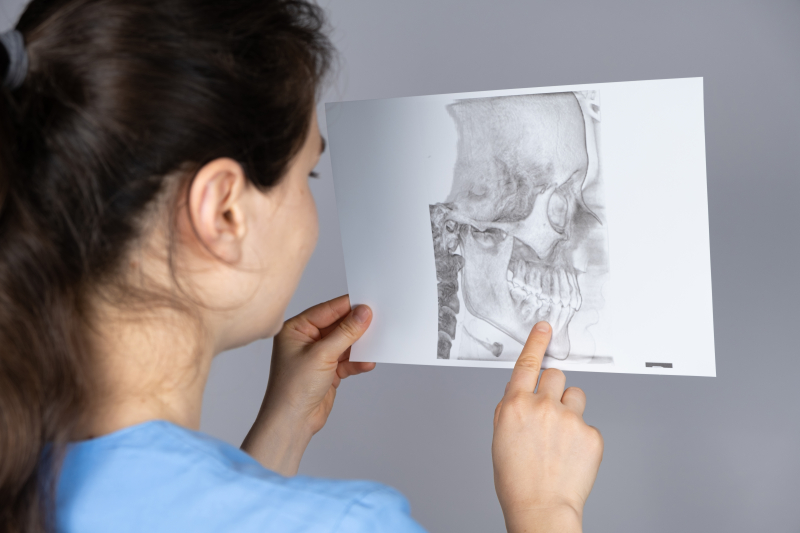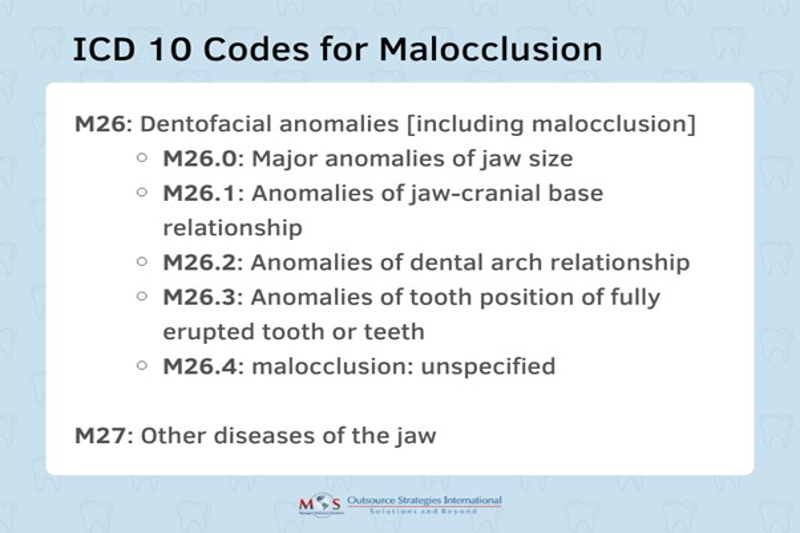Malocclusions are dental conditions characterized by misalignment of the teeth when the jaws are closed. Dental exams and X-rays can identify problems with bite and teeth misalignment. Malocclusions are categorized based on their characteristics and the affected teeth.
Dental professionals can rely on dental coding services to ensure that diagnosis and treatment of malocclusions are recorded and communicated effectively. Accurate coding plays a critical role in the effective management of orthodontic issues, insurance processes, research endeavors, and overall patient care.
Malocclusion Types and Their ICD-10 Codes
Here are some common types of malocclusions and their corresponding ICD-10 codes:
- Class I: This is the most common type of malocclusion where the upper and lower teeth are not aligned properly but do not affect the bite significantly.
- Class II: Also known as retrognathism, this malocclusion involves an overbite, where the upper teeth protrude significantly over the lower teeth.
- Class III: Also known as prognathism, this malocclusion involves an underbite, where the lower teeth protrude significantly beyond the upper teeth.
- Open Bite: In this type, there is a space or gap between the upper and lower front teeth when the jaws are closed.
- Crossbite: This malocclusion occurs when one or more upper teeth bite inside the lower teeth, causing a lateral misalignment.
- Crowding: Crowding is a condition where there is insufficient space in the jaw for all the teeth to fit properly, leading to overlapping and misalignment.
- Spacing: In contrast to crowding, spacing is a malocclusion where there are gaps or spaces between the teeth due to excess jaw space.
ICD-10 Codes
- M26: Dentofacial anomalies [including malocclusion]
- M26.0 Major anomalies of jaw size
- M26.1 Anomalies of jaw-cranial base relationship
- M26.2 Anomalies of dental arch relationship
- M26.20 Unspecified anomaly of dental arch relationship
- M26.21 Malocclusion, Angle’s class
- M26.22 Open occlusal relationship
- M26.23 – Excessive horizontal overlap
- M26.24 – Reverse articulation
- M26.25 – Anomalies of interarch distance
- M26.29 – Other anomalies of dental arch relationship
- M26.3 Anomalies of tooth position of fully erupted tooth or teeth
- M26.30 unspecified anomaly of tooth position of fully erupted
- M26.31 crowding of fully erupted teeth
- M26.32 excessive spacing of fully erupted teeth
- M26.33 horizontal displacement of fully erupted tooth or teeth
- M26.34 vertical displacement of fully erupted tooth or teeth
- M26.35 rotation of fully erupted tooth or teeth
- M26.36 insufficient interocclusal distance of fully erupted
- M26.37 excessive interocclusal distance of fully erupted
- M26.39 other anomalies of tooth position of fully erupted
- M26.4 malocclusion: unspecified
- M27 Other diseases of the jaw
Each patient’s malocclusion may vary in complexity and require personalized treatment plans.
Partnering with an experienced dental billing company can ensure streamlined insurance billing, clean claim submissions, and improved cash flow. These companies have highly skilled coders who will thoroughly analyze patient records, meticulously assigning the appropriate diagnosis codes to ensure precise billing. Moreover, they will also adeptly incorporate associated codes for any other applicable diagnoses in specific clinical situations. Dental billing specialists stay abreast of insurance industry modifications and updates to ICD-10 and CDT codes, ensuring compliance with the latest changes and adhering to best billing practices.
Minimize dental coding hassles and maximize your revenue!






